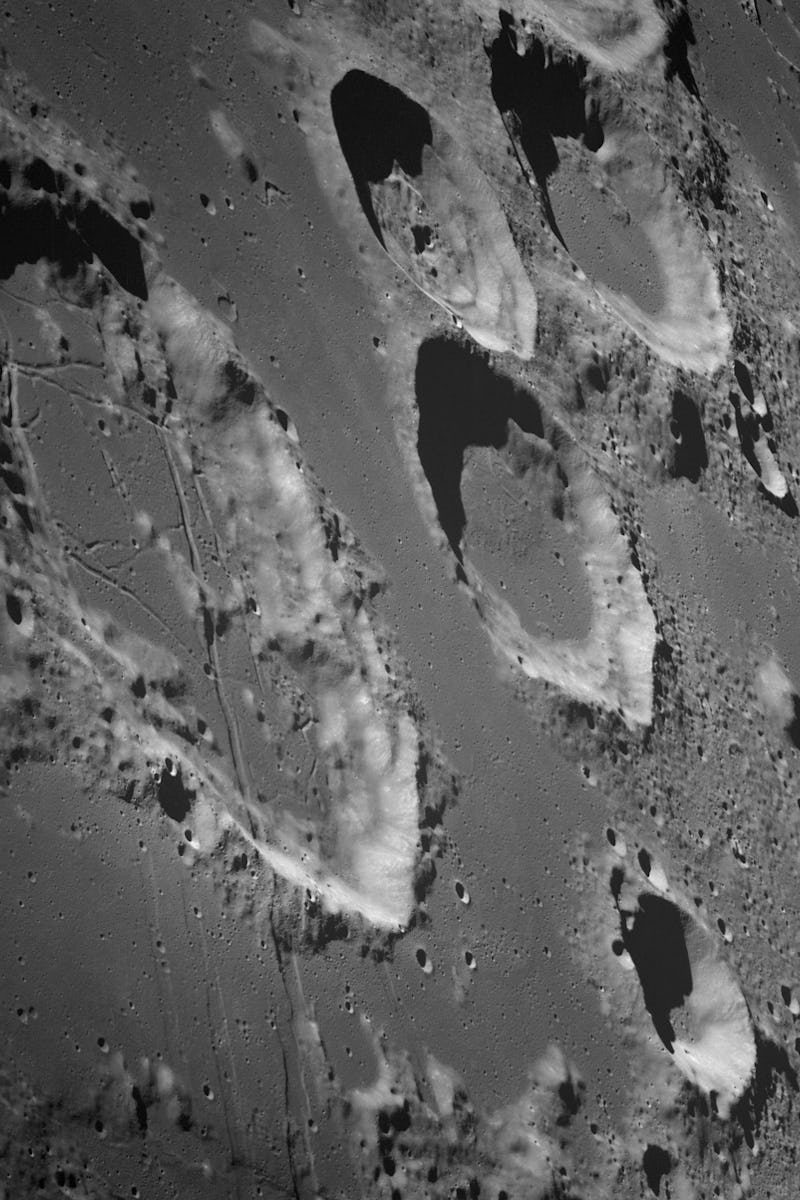“They become doorways to the underworld."
Lava caves on the Moon could offer refuge for future astronauts
In a new study, scientists examined underground lava tunnels on the Moon, and found that they could provide refuge for future lunar astronauts.
by Passant RabieAs humanity's next trip to the Moon inches closer, space agencies are thinking of ways through which future astronauts can successfully colonize and live on the Moon and other planets
Ideas have varied from futuristic, sci-fi reminiscent colonies to basic structures built from mushrooms. However, new research suggests a literally dark solution: Astronauts could hide out in massive, underground lava tunnels that are as large as entire towns.
The study was published in the July issue of Earth-Science Reviews and is part of the European Space Agency's (ESA) Cooperative Adventure for Valuing and Exercising human behavior and performance Skills, or CAVES, training program.
The researchers compared underground lava tunnels on Earth to those found on the Moon and Mars. Lava tunnels form as a result of a lava stream cooling and hardening, thereby creating a tunnel beneath the surface, as hot lava itself cracks its way through the underground.
They found that while these tunnels stretch across 10 to 30 meters in diameter on Earth, they could reach up to 800 meters in diameter beneath the surface of the Moon.
“They become doorways to the underworld,” Francesco Sauro, technical course director of ESA’s CAVES and Professor of Planetary Geology at the University of Bologna, Italy, explained.
Researchers collecting samples from a lava tube in Lanzarote, Spain.
A city-sized network – To come to this conclusion, the study team explored lava tubes in Spain’s Canary Islands, Iceland, Hawaii, and Australia, and then used satellite imagery to create computer models of lava tubes on the Moon and Mars.
By measuring the size and morphology of lunar and martian caves, the researchers were able to compare their dimensions with the caves found on Earth.
“Martian and lunar lava tubes are so huge that they could contain the entire centre of a medium-sized city," co-author Riccardo Pozzobon, a researcher at the University of Padua in northern Italy, said in a statement. "On the Moon, their volume can exceed one billion cubic meters, up to one kilometer in diameter or as wide as Central Park in New York.”
The reason why the lava tubes run larger on the Moon and Mars is due to those celestial objects' low gravity compared to Earth. This also explains why the caves have not collapsed.
ESA is planning to explore the underground tunnels of the Moon.
With their massive size and the fact that they run underground, these lava tunnels could provide the perfect shelter for future astronauts seeking refuge from harmful radiation from the Sun and the surrounding cosmos, as well as the cold temperatures on the surface of the Moon.
These underground tunnels could potentially be turned into long-term protective habitats for astronauts, the study suggests.
More direct evidence is needed in order to confirm the size and structure of the lava tunnels: ESA is working on developing ideas to explore lunar caves through its SysNova Lunar Caves campaign, which was launched in August of last year, and plan on sending robots through the underground tunnels.
Abstract: Sinuous collapse chains and skylights in lunar and Martian volcanic regions have often been interpreted as collapsed lava tubes (also known as pyroducts). This hypothesis has fostered a forty years debate among planetary geologists trying to define if analogue volcano-speleogenetic processes acting on Earth could have created similar subsurface linear voids in extra-terrestrial volcanoes. On Earth lava tubes are well known thanks to speleological exploration and mapping in several shield volcanoes, with examples showing different genetic processes (inflation and overcrusting) and morphometric characters. On the Moon subsurface cavities have been inferred from several skylights in Maria smooth plains and corroborated using gravimetry and radar sounder, while on Mars several deep skylights have been identified on lava flows with striking similarities with terrestrial cases. Nonetheless, the literature on this topic is scattered and often presents inaccuracies in terminology and interpretation. A clear understanding of the potential morphologies and dimensions of Martian and lunar lava tubes remains elusive.
